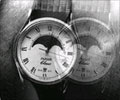Rehabilitacion (Madr)
[Percutaneous posterior tibial nerve electrostimulation in urge urinary incontinence and faecal incontinence].
Álamo Vera V, González Oria MO, Carvajal Ramos E, Murciano Casas MP, Guillen Haynes C, García Obrero MI
The main aim of this study was to assess the efficacy of percutaneous posterior tibial nerve electrostimulation (P-PTNS) in urge urinary incontinence ...
Read More
Source: PubMed
Eur. J. Obstet. Gynecol. Reprod. Biol.
The prevalence of pelvic floor disorders and degree of bother among women attending primary care clinics in Armenia.
Badalian SS, Sagayan E, Simonyan H, Minassian VA, Isahakian A
To explore the prevalence of various Pelvic Floor Disorders (PFD) and the degree of symptom bother in a convenience sample of Armenian women in the Re ...
Read More
Source: PubMed
Cardiovasc. Pathol.
Comparative pathology of human and canine myxomatous mitral valve degeneration: 5HT and TGF-ß mechanisms.
Oyama MA, Elliott C, Loughran KA, Kossar AP, Castillero E, Levy RJ, Ferrari G
Myxomatous mitral valve degeneration (MMVD) is a leading cause of valve repair or replacement secondary to the production of mitral regurgitation, car ...
Read More
Source: PubMed
Eur J Med Genet 2020 Jan 29
Recessive marfanoid syndrome with herniation associated with a homozygous mutation in Fibulin-3.
Bizzari S, El-Bazzal L, Nair P, Younan A, Stora S, El-Hayek S, Delague V, Mégarbané A
We have previously reported on a consanguineous family where 2 siblings, a girl and a boy, presented with tall stature, long and triangular faces, pro ...
Read More
Source: PubMed
Acta Biomater 2020 Jan 29
Functional supramolecular bioactivated electrospun mesh improves tissue ingrowth in experimental abdominal wall reconstruction in rats.
Mori da Cunha MGMC, Arts B, Hympanova L, Rynkevic R, Mackova K, Bosman AW, Dankers PYW, Deprest J
Development of biomaterials for hernia and pelvic organ prolapse (POP) repair is encouraged because of high local complication rates with current mate ...
Read More
Source: PubMed








